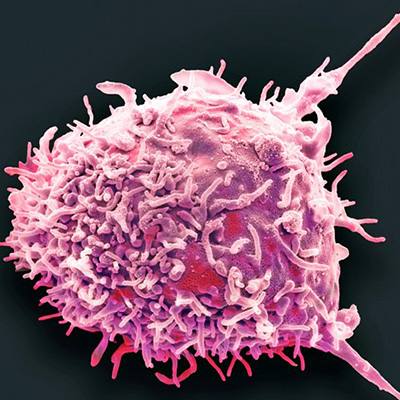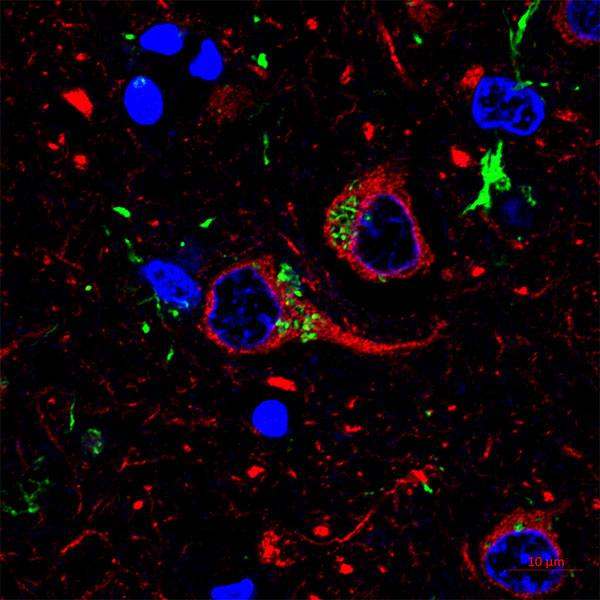-
Discovery Science
Steering Cells through the Brain

Until recently, the understanding of how the brain develops fell along the lines of “you get what you get.” Common thinking was that each person is born with a finite number of irreplaceable neurons that slowly die off over a lifetime. However, studies just a decade ago showed the brain has a lifelong ability to generate its own source of neural stem cells—neuroblasts—that can develop into neurons. A few years ago, the collaborative research teams of neuroscientists Alfredo Quinones-Hinojosa, M.D., and Hugo Guerrero-Cazares, M.D., Ph.D., found neuroblasts migrate in the fetal brain from the region known as the subventricular zone to the olfactory bulb, where they fully differentiate into neurons. But exactly how the cells make the long journey hasn’t been clear.
That mystery is now being teased apart. In a study appearing in the journal Stem Cells, the team recently ascertained a key set of molecular cues that guide the migration of neural progenitor cells on their way through the developing brain. The cues involve protein interactions that actually repel the cells, like buffers, directing them away from the subventricular zone and guiding them along their pathway. “This chemorepellent signaling had been defined before in mice but had never been described before in the human brain,” says first author Dr. Guerrero-Cazares, of the department of neurosurgery. “We now know the class of Slit proteins, which links with a class of receptors called Robo, is able to repel human neuroblasts and direct them.”

The implications of this study are far-reaching. “What we’ve learned about the signaling of neural stem cells offers a paradigm shift in how we can think about treating diseases in the brain,” notes Dr. Quinones-Hinojosa, chair of Mayo's department of neurosurgery in Florida and the study’s principal investigator. For example, in addressing neurodegenerative conditions like Parkinson’s, exploiting the signaling proteins might help direct new cells to brain regions where neurons are dying. In addition, the cells of aggressive brain tumors are also directed by repellant signaling, moving away from Slit-rich areas and invading deeper into brain tissue. “We can now think of using this naturally-occurring signaling pathway to develop new treatments that control the migration of cells in the brain,” he says.
- Kate Ledger, April 14







